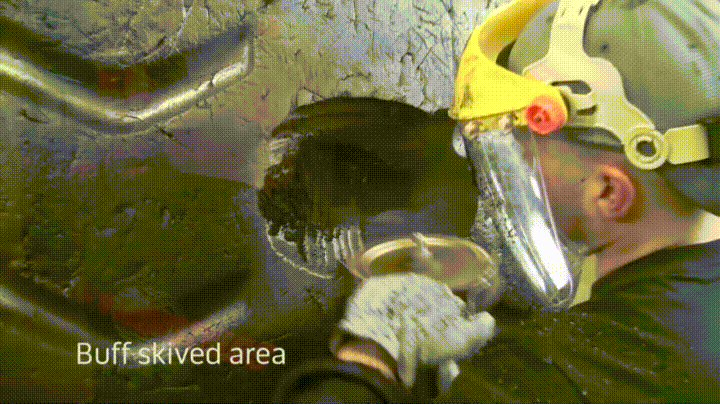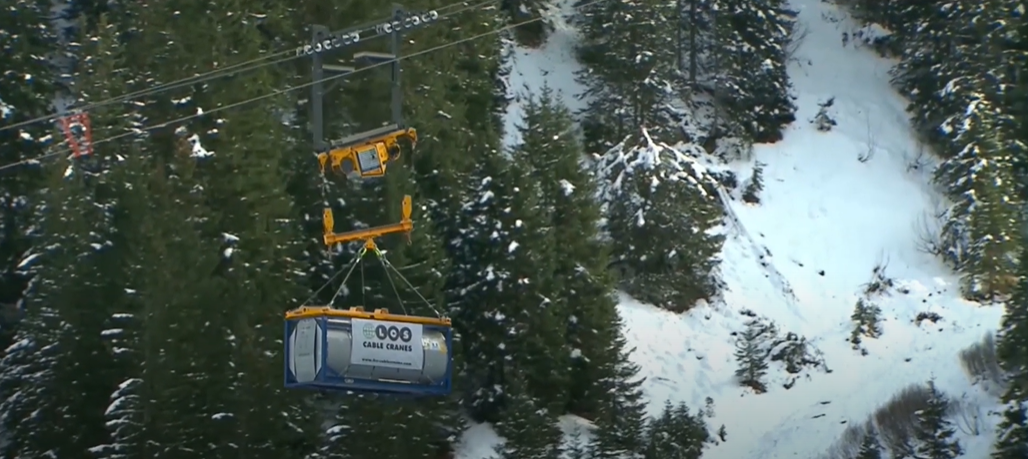If the tire on your car gets punctured, you might be stuck waiting at the maintenance shop for around an hour for the hole to be patched. But, if one of your $30,000 heavy duty earthmoving tires develops a hole, you’re going to be waiting much longer.
The video below shows the entire process of repairing a relatively small laceration in an earthmoving tire, using a process created by REMA TIP TOP. REMA supplies automotive and industrial products, including the OTR Tire Retread Product, highlighted in the video, which are made in the company’s Madison, GA plant.
As you’ll see, the repair requires a heck of a process to complete, which starts by making the small hole into a large crater. After the patch is cut in and applied, a series of taping, gumming, and stitching techniques keep the patch in place. It’s a long and tedious process that clearly requires a lot of precision and quality, so we can take solace in that fact that we’re not the ones that have to do the work. There is a significant part of the tire repair process that was cut out of the video, however, which is the vulcanization process, which hardens the rubber by heating it at high temperatures with sulfur.
If you’re interested in some general best practices for maintaining your large equipment tires, OTR Tires provided some good tips on their website. Many of the tips, like checking tire pressure regularly, checking tread depth, and avoiding potholes, are pretty obvious, but others are good reminders. Maintaining proper speed, for example, isn’t just a good practice for safety, each tire also has a recommended speed limit that should not be topped. If you’re storing your tires, make sure it’s for no longer than 90 days and in an area that does not get extremely hot or cold.
There have been many attempts to use different materials for the structural support systems of buildings over the years, but stainless steel is not one that I have come across before. The BROAD Group, based in China, recently highlights a multi-story, cantilevered building made entirely of stainless steel.
On Tuesday morning, February 23, the Syracuse Fire Department responded to a call about a collapsed crane on a construction site near the university. Thankfully, no injuries were reported.
Remote jobsites with difficult terrain pose some substantial logistical challenges when it comes to getting equipment and materials on site. I’ve seen several different methods used in the past, such as heavy equipment carrying blimps, cargo planes, helicopters, and the Fat Truck, but I recently came across a new method: a cable car.
In November of last year, the 546 foot tall Mina Plaza in Abu Dhabi officially broke the world record for tallest demolition by explosion, supplanting Hudson Department Store in Detroit, Michigan, which held the record for 22 years.
If you need to get some heavy mechanical equipment on the roof of your project, you could use a boring old crane – or you could gas up the bird and make that equipment take literal flight. Alright, so cranes aren’t actually boring, but some times a helicopter makes more logistical sense, either because it reduces total lift time or, in some cases, makes economical sense. Either way, there are some important safety precautions to take in case something goes wrong.
2020 was a stressful year, so let’s decompress a little bit by reviewing some of the most fun demolition videos from the past year. A demolition that broke a 22 year old record highlights the bunch and I also stretch what the definition of “demolition” is a little bit, because I think the video is so cool. Don’t @ me.
Without further ado, here are the top 7 demolition videos from 2020:
With the large amount of people that work in the construction industry and the high visibility of many of these projects, I’m always amazed that television networks never spent any time developing shows about it. The Smithsonian Channel, however, is about to premiere a new show, dedicated to the design and construction of some of the world’s most fascinating structures and the first episode will air on Sunday night, January 3rd, 2021.
2 years ago, crane manufacturer, Sarens, unveiled what is considered to be the world’s largest crane, by both size and lifting capacity. Big Carl, as the huge crane was nicknamed, began work a few months later on the Hinkley Point C nuclear power station in England. Now, the jobsite boasts an abundance of crane activity, a true site to behold, and it was captured on aerial footage for you to enjoy.
Back in 1998, the Hudson Department Store in downtown Detroit, Michigan was demolished by explosives. That building stood 410 feet tall across its 29 floors, making it, at the time, the tallest building to ever be taken down by implosion. The dust cloud covered many city blocks and the 20,000 unsuspecting people that came to watch the event. That record was just recently broken by a building over 100 feet taller than it.











While still new in the construction industries, robots are typically designed to perform a specific task in a highly precise and efficient way, like the rebar tying robot, Tybot or the brick-laying robot Hadrian X. More recently, though, robots are being imagined as platforms for 3rd party companies to develop hardware and accessories to attach to the base robot, like the Boston Dynamics robotic dog, Spot. I recently came across a new robot, called Baubot, which hopes to one day perform tasks using every tool on a typical jobsite.